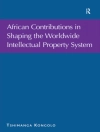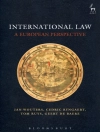This book reviews and assesses the status quo concerning the rule of law in China in 2017 and predicts its future development in such fields as legislation, judicial reform, civil, commercial and economic law, social law, safeguarding of human rights, criminality, Internet finance, the securities market, pilot free trade zones, administrative public interest litigation, regulation of investment management business, and AI.
The book consists of a series of reports on the assessment of rule of law carried out by the Innovation Project Team on the Rule of Law Index at the Institute of Law, Chinese Academy of Social Sciences. Drawing on data from web portals and using the methods of browsing websites and verifying results through phone calls, the book includes assessment reports on the government transparency of 54 departments under the State Council and the governments of 31 provinces (autonomous regions and municipalities directly under the Central Government), 49 larger cities, and 100 counties (cities and districts).
In addition, reports are provided on the judicial transparency of the Supreme People’s Court, 31 higher people’s courts, and the intermediate people’s courts of 49 larger cities, the procuratorial transparency of the Supreme People’s Procuratorate and people’s procuratorates of 31 provinces (autonomous regions and municipalities directly under the Central Government) and 49 larger cities, as well as the maritime judicial transparency of 10 maritime courts in the country. The book also includes reports on disclosure of information and transparency in the public security organs of four municipalities directly under the Central Government and 27 provincial (autonomous regional) capitals.
Given its scope, the book offers a valuable asset for legal scholars, lawyers, judges, prosecutors, graduate and undergraduate students, and all those who are interested in Chinese law and the country’s rule of law index.
Inhoudsopgave
Chapter 1: The Rule of Law in China: the Situation in 2017 and the Prospect in 2018.- Chapter 2: Development of Court Informatization in China: the Situation in 2017 and the Prospect in 2018.- Chapter 3: Report on the Index of Legislative Transparency in China (2018).- Chapter 4: Report on the Index of Government Transparency in China (2017).- Chapter 5: Report on the Index of Judicial Transparency in China (2017).- Chapter 6: Third-party Assessment Report on Court Informatization in China (2017).- Chapter 7: Report on the Index of Procuratorial Transparency in China (2017).- Chapter 8: Report on the Index of Transparency of Police Affairs in China (2017).- Chapter 9: Report on the Index of Maritime Judicial Transparency in China (2017).- Chapter 10: The Protection of the Rights of the Child in China: Current Situation and the Third-party Assessment Index System.
Over de auteur
He Tian was Research Fellow, Director of the Center for Studies of National Index of the Rule of Law, and Lead Researcher in the Innovation Project on the Rule of Law Index, Institute of Law, Chinese Academy of Social Sciences, China; Editor-in-Chief, Blue Book of Rule of Law; Member of the Expert Consultation Committee on Informatization and Specially Invited Expert Consultant on Enforcement, the Supreme People’s Court; National Advanced Worker; and Expert enjoying special government allowance awarded by the State Council. His main research fields are criminal law, positive jurisprudence, and the judicial system.
Yanbin Lv was Research Fellow, Deputy Director of the Center for Studies of National Index of the Rule of Law, Head of the Department of Survey and Studies of National Situation of Rule of Law, and Executive Researcher in the Innovation Project on the Rule of Law Index, Institute of Law, Chinese Academy of Social Sciences, China; Executive Editor-in-Chief, The Blue Book of Rule of Law. His main research fields are administrative law, information law, and positive jurisprudence.












